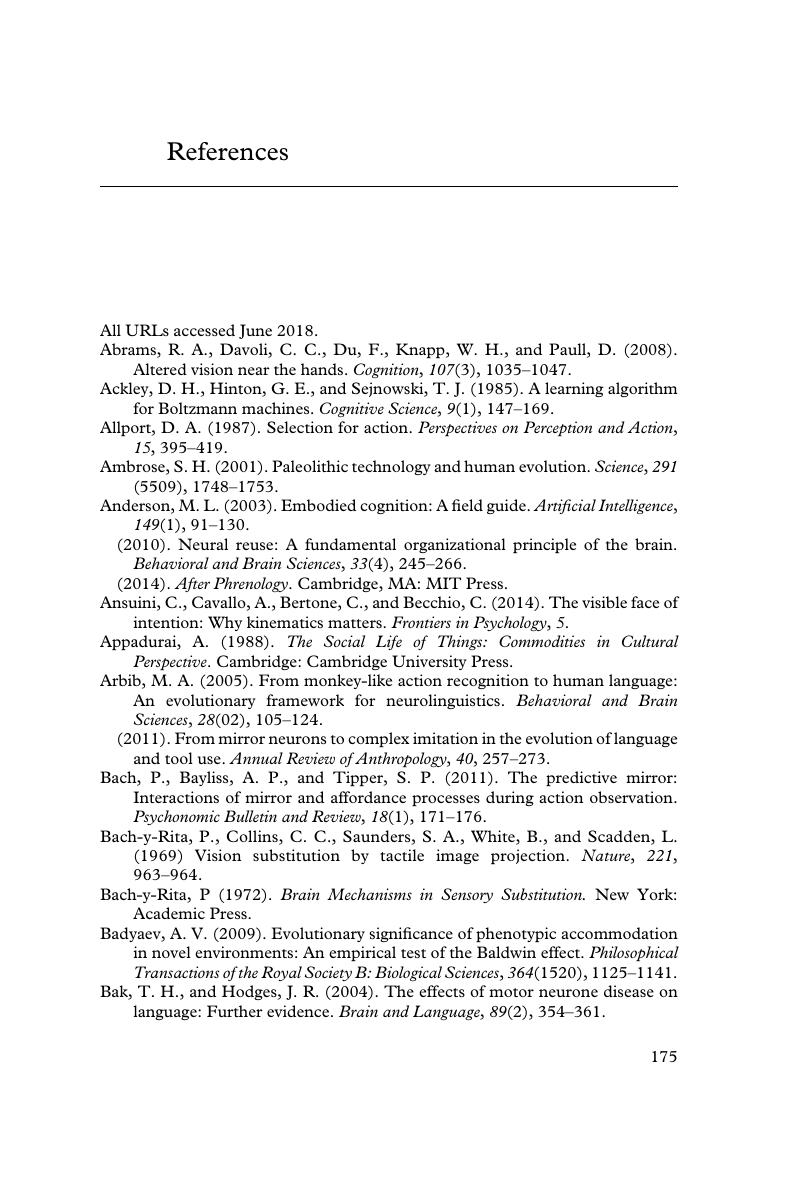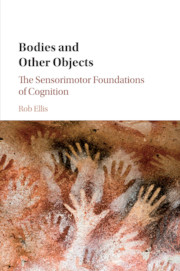Book contents
- Bodies and Other Objects
- Bodies and Other Objects
- Copyright page
- Dedication
- Contents
- Illustrations
- Acknowledgements
- Introduction
- 1 Reframing Cognition
- 2 Vision and Action
- 3 Tool Use and Tool Incorporation
- 4 Agency, Objects and Others
- 5 Material Cultures
- 6 Language
- 7 A Synthesis: Networks of Human Agents as Physical Symbol Systems
- References
- Index
- References
References
Published online by Cambridge University Press: 22 October 2018
- Bodies and Other Objects
- Bodies and Other Objects
- Copyright page
- Dedication
- Contents
- Illustrations
- Acknowledgements
- Introduction
- 1 Reframing Cognition
- 2 Vision and Action
- 3 Tool Use and Tool Incorporation
- 4 Agency, Objects and Others
- 5 Material Cultures
- 6 Language
- 7 A Synthesis: Networks of Human Agents as Physical Symbol Systems
- References
- Index
- References
Summary

Information
- Type
- Chapter
- Information
- Bodies and Other ObjectsThe Sensorimotor Foundations of Cognition, pp. 175 - 195Publisher: Cambridge University PressPrint publication year: 2018
